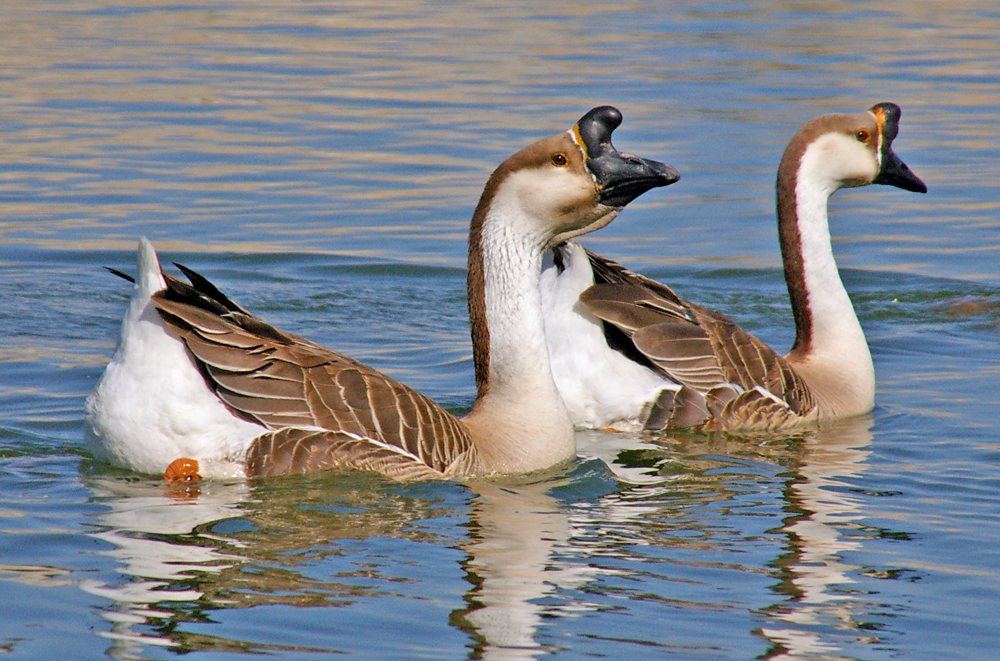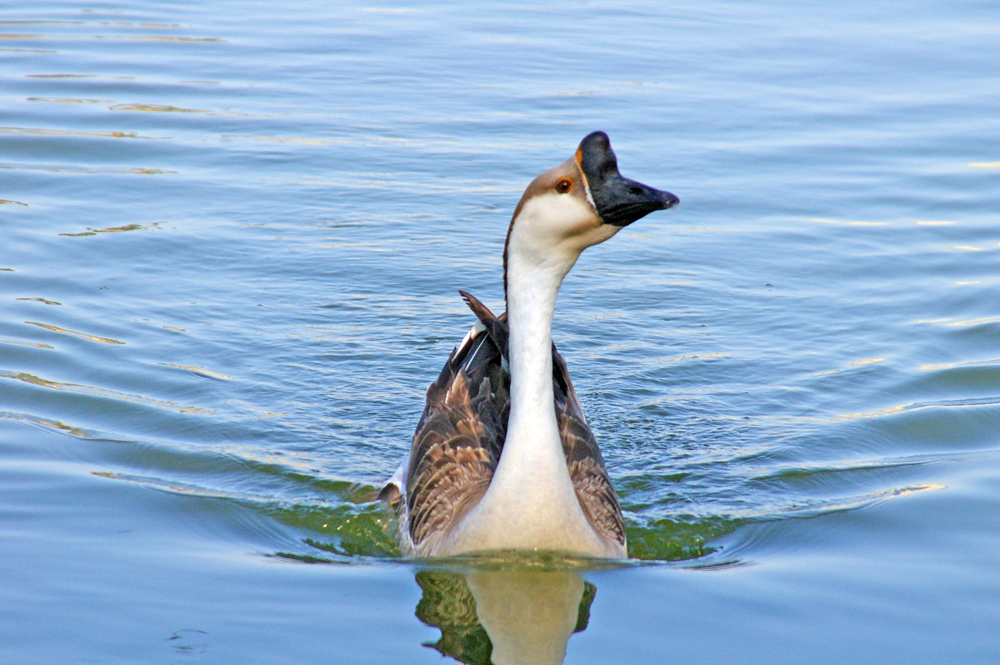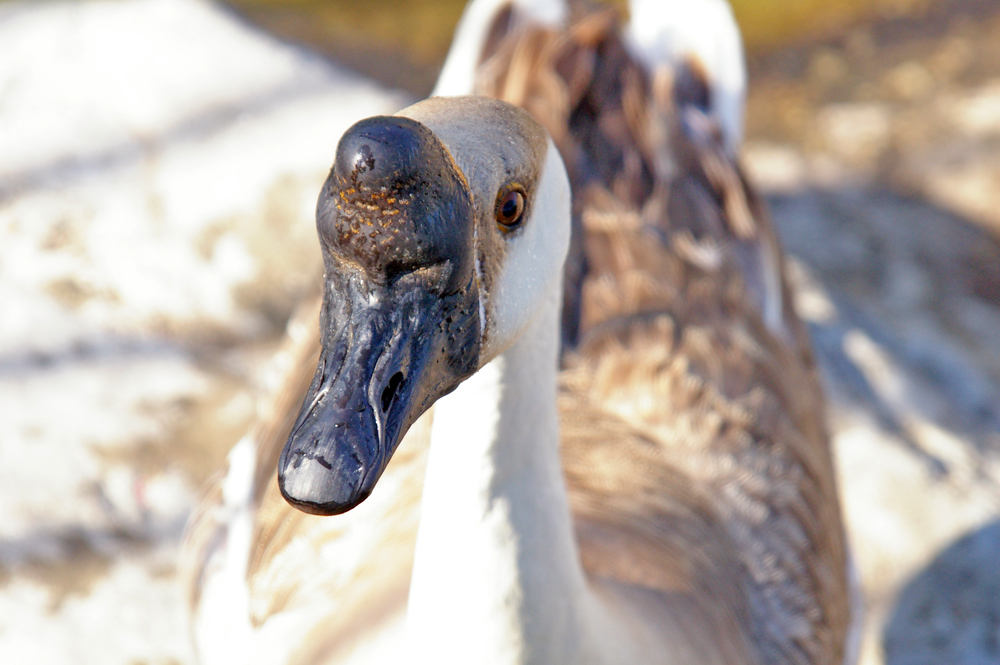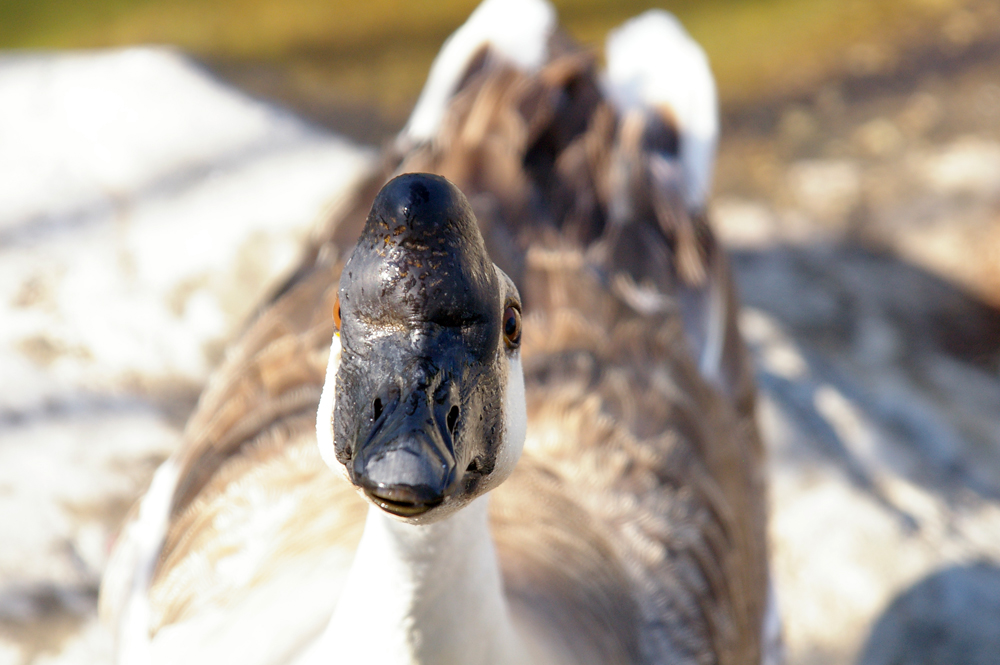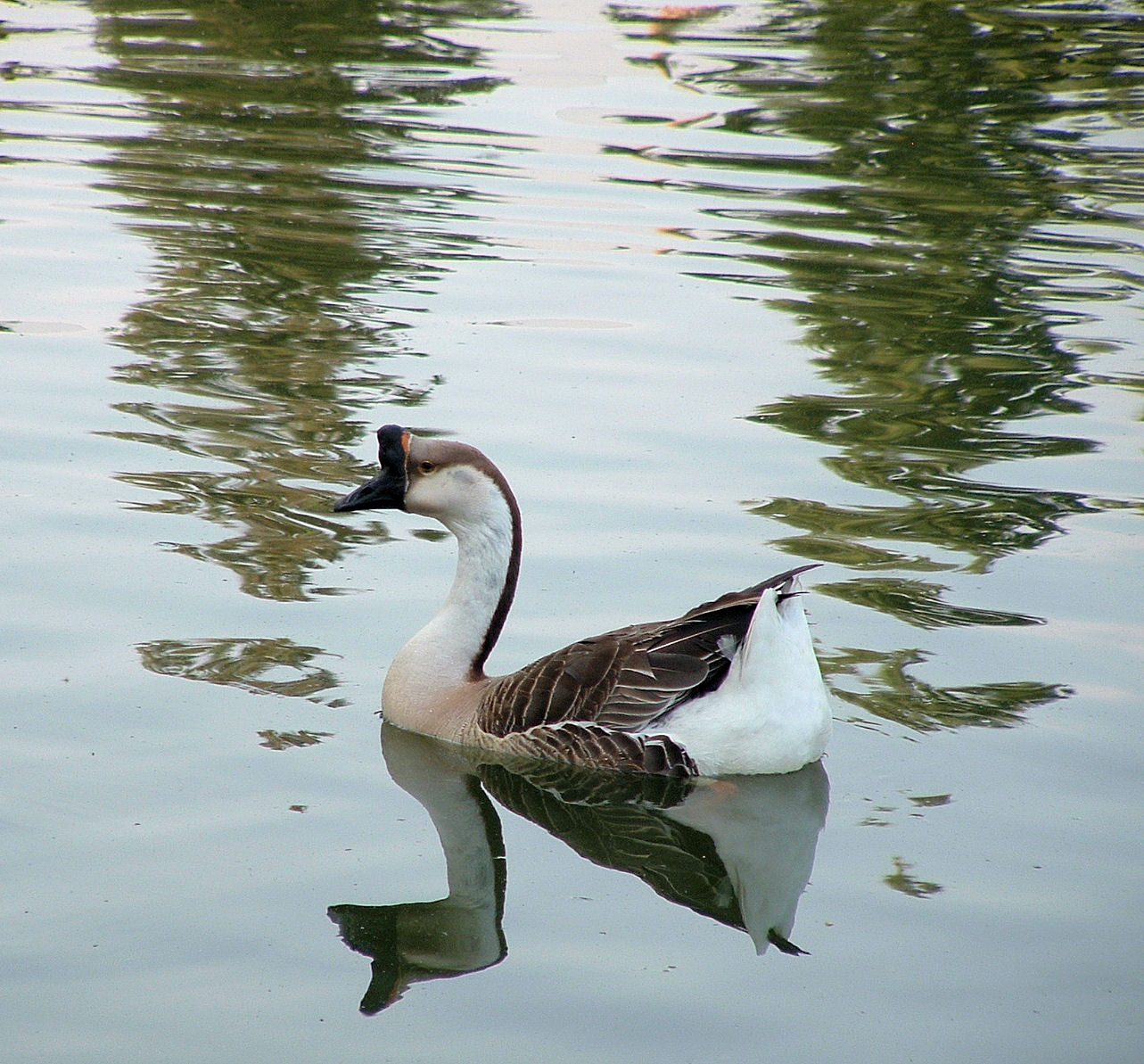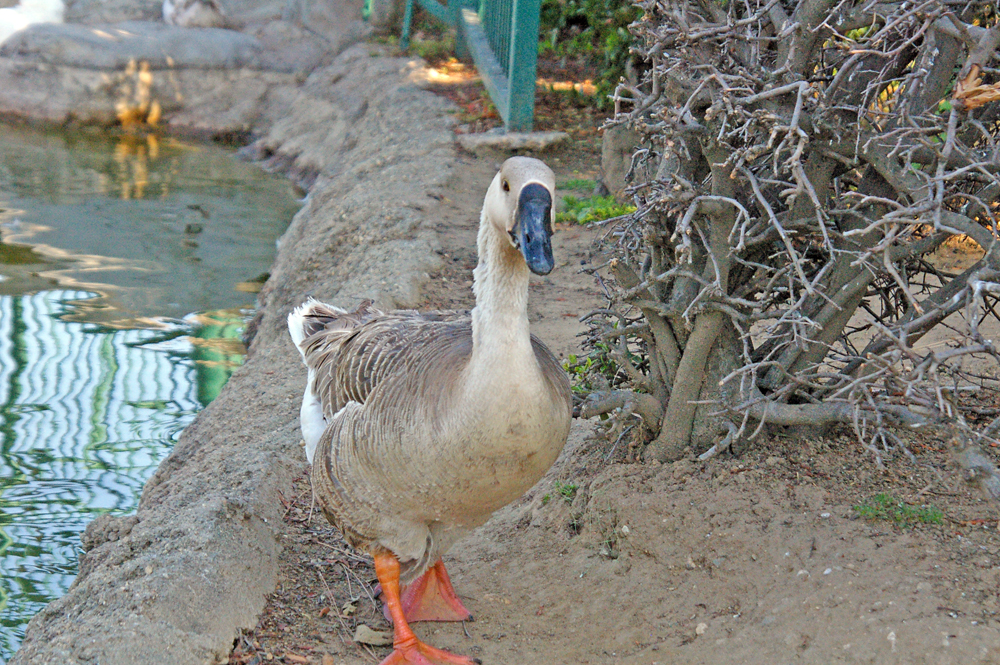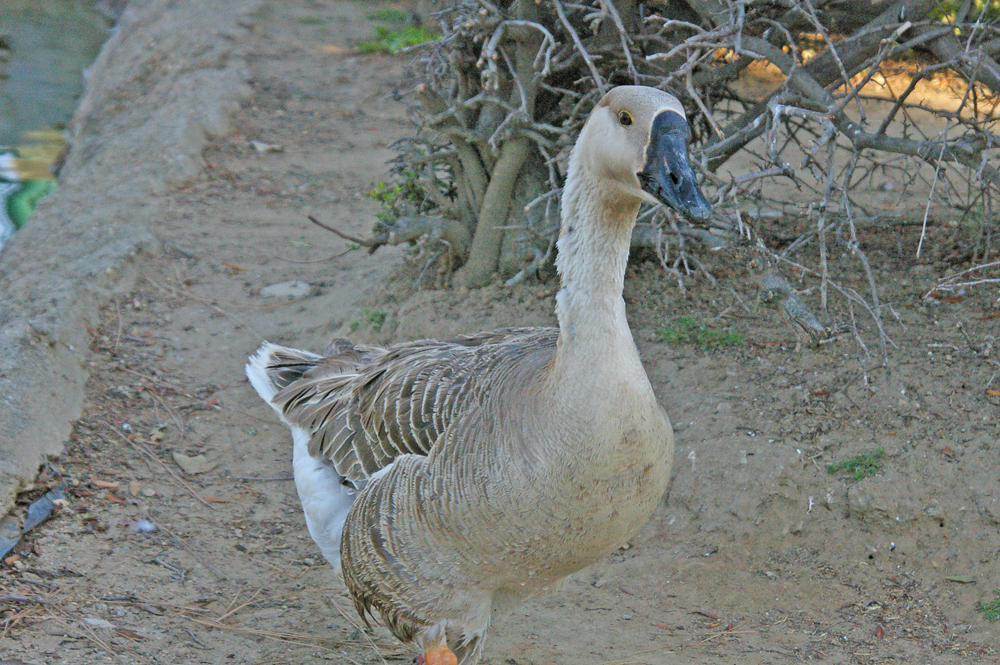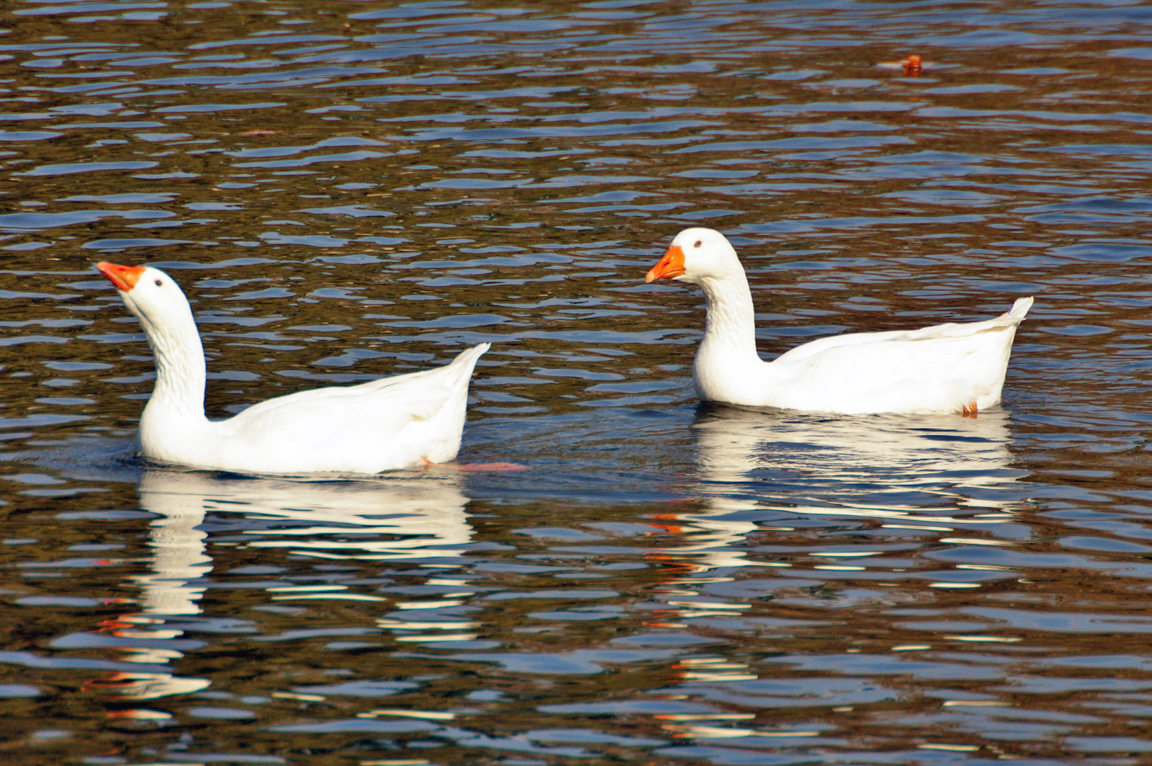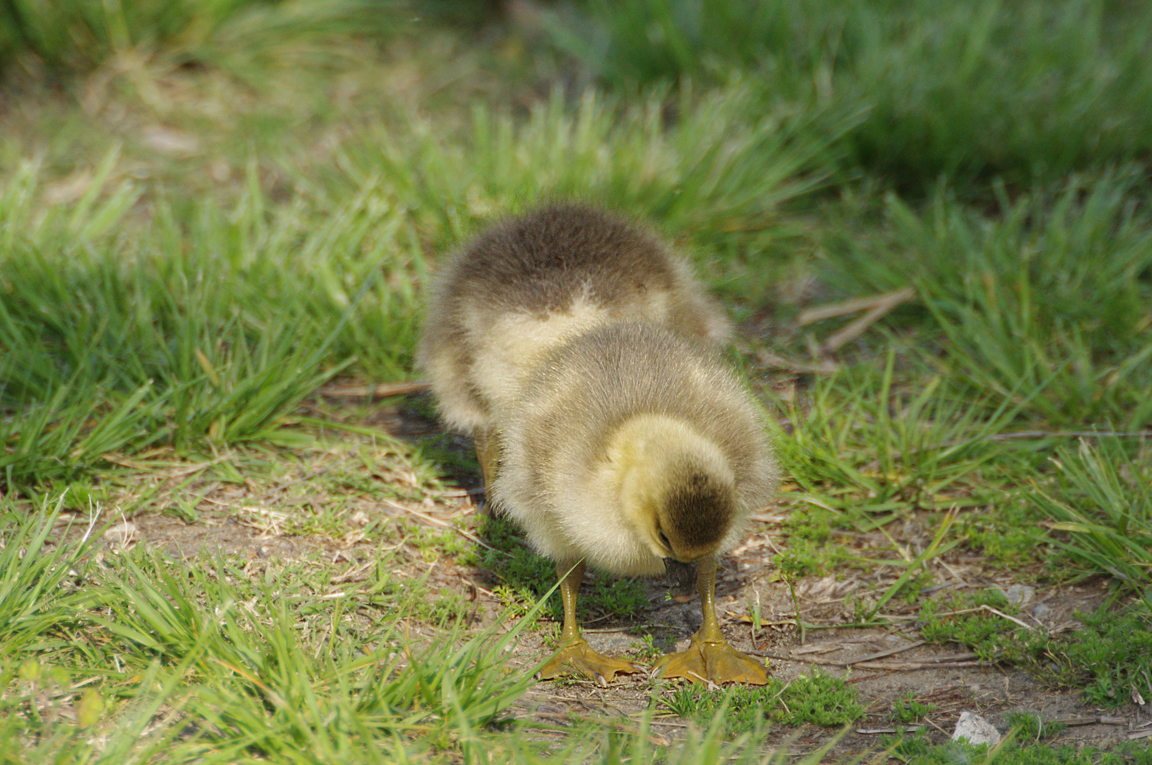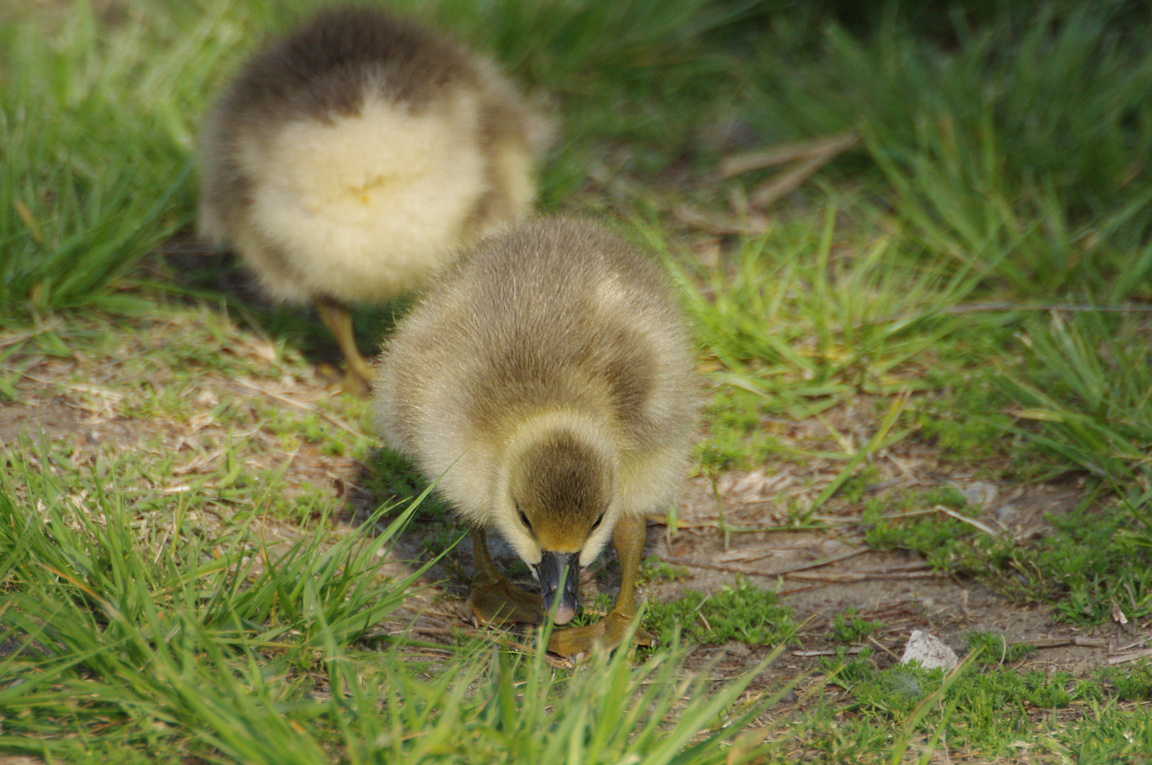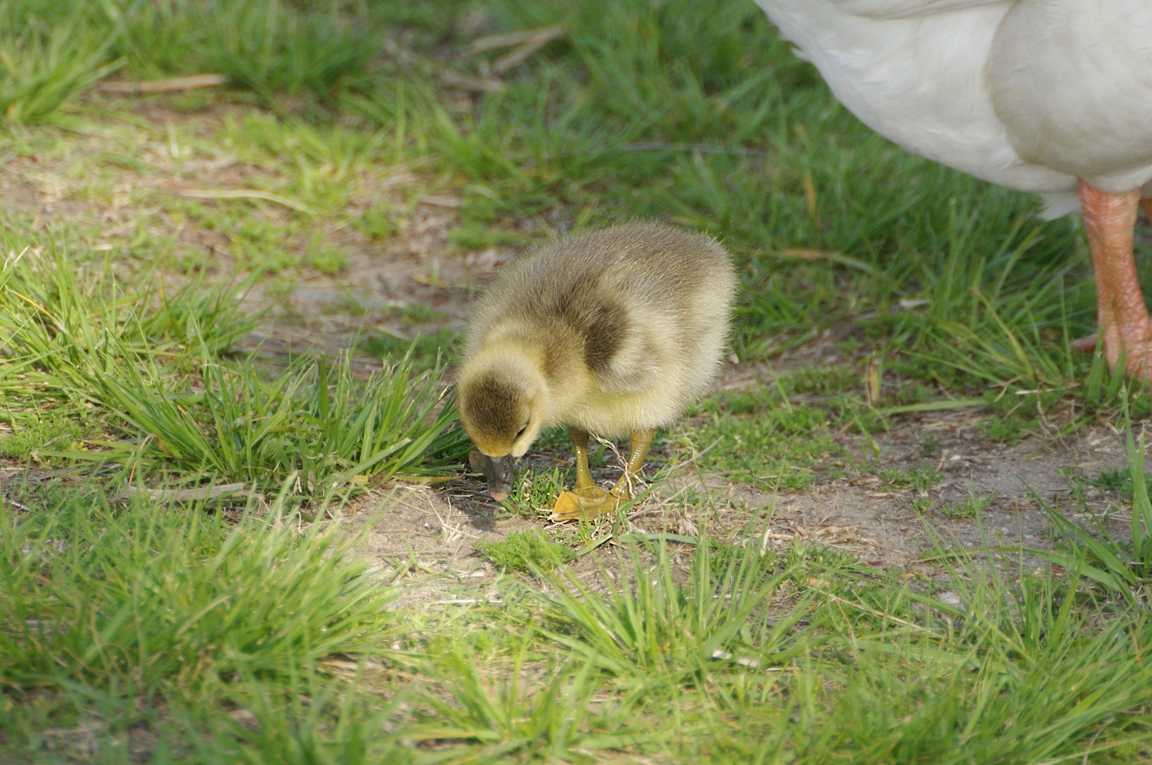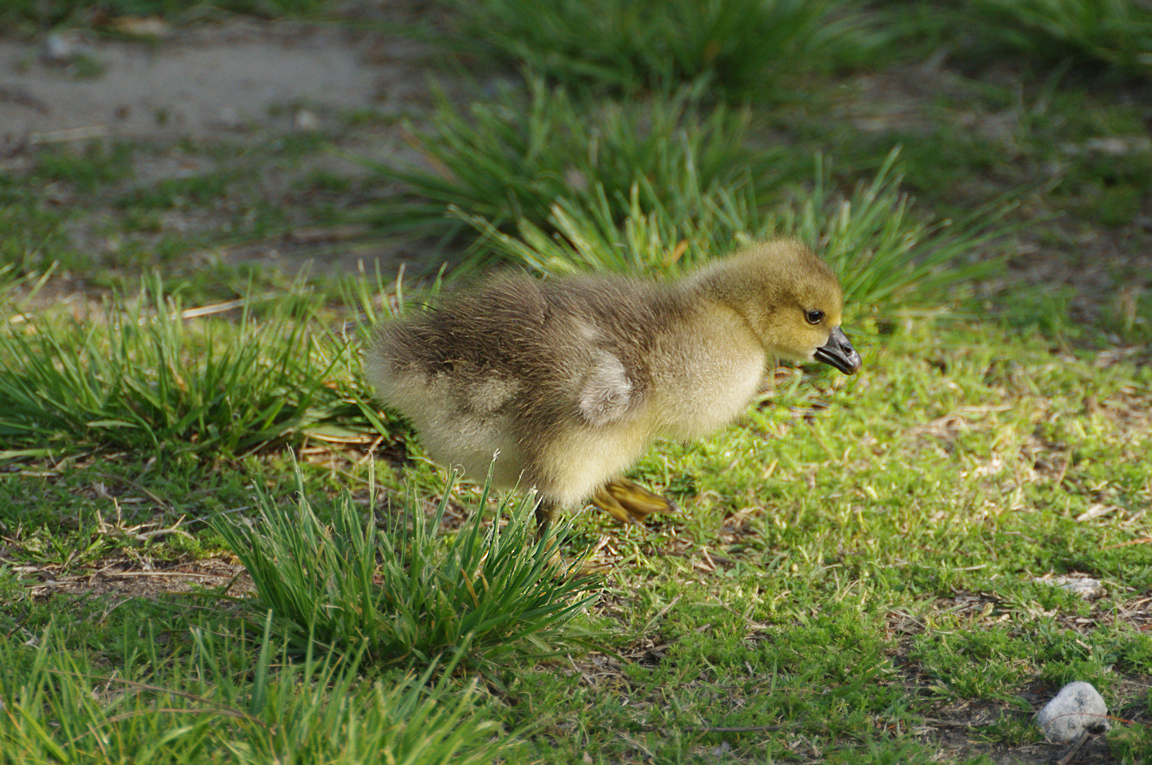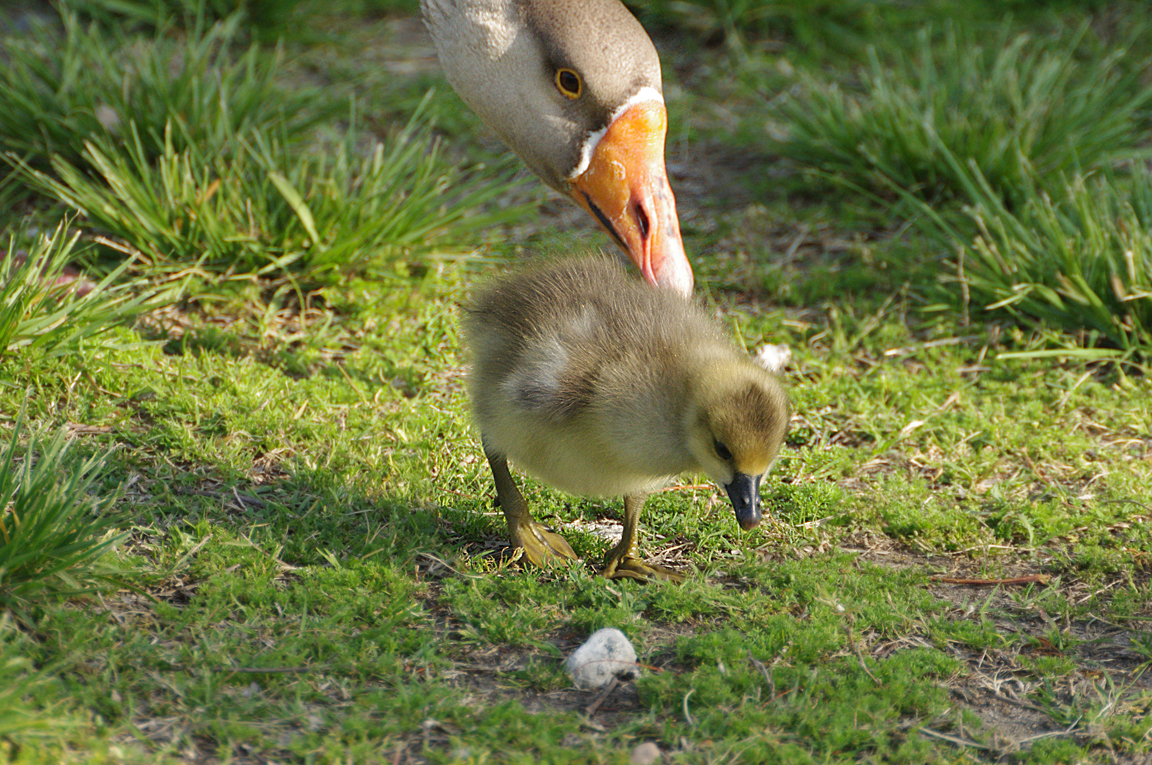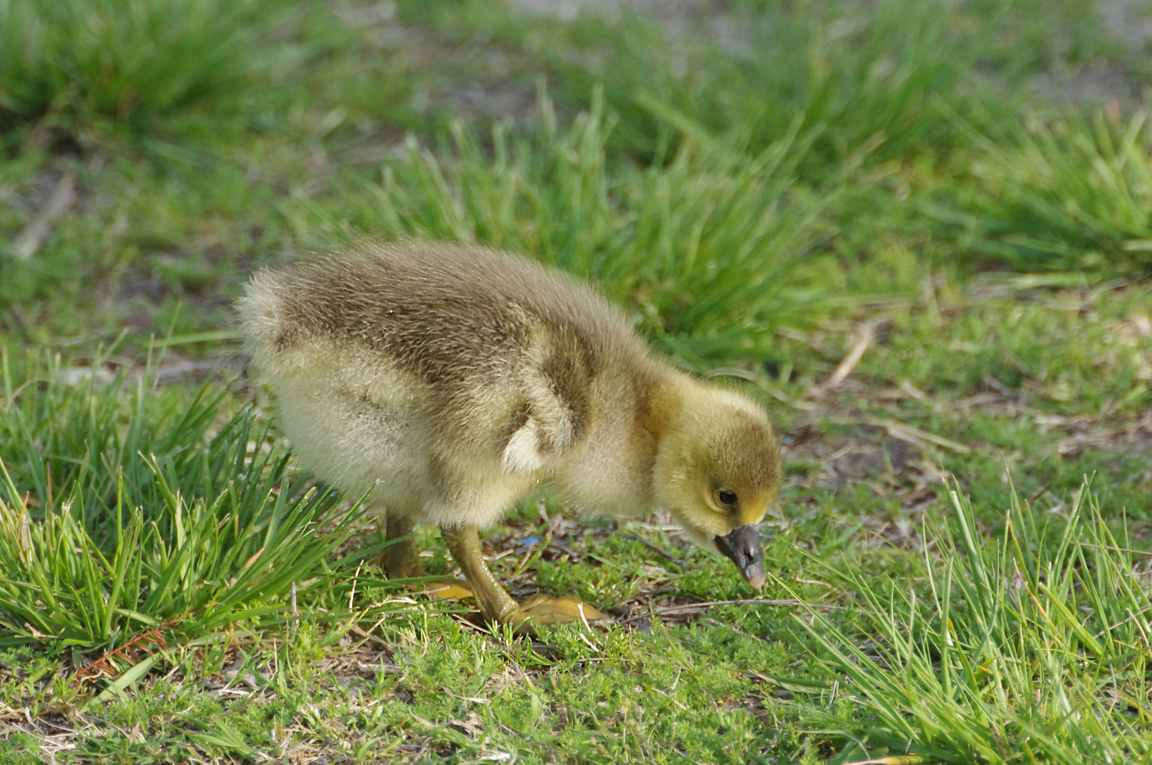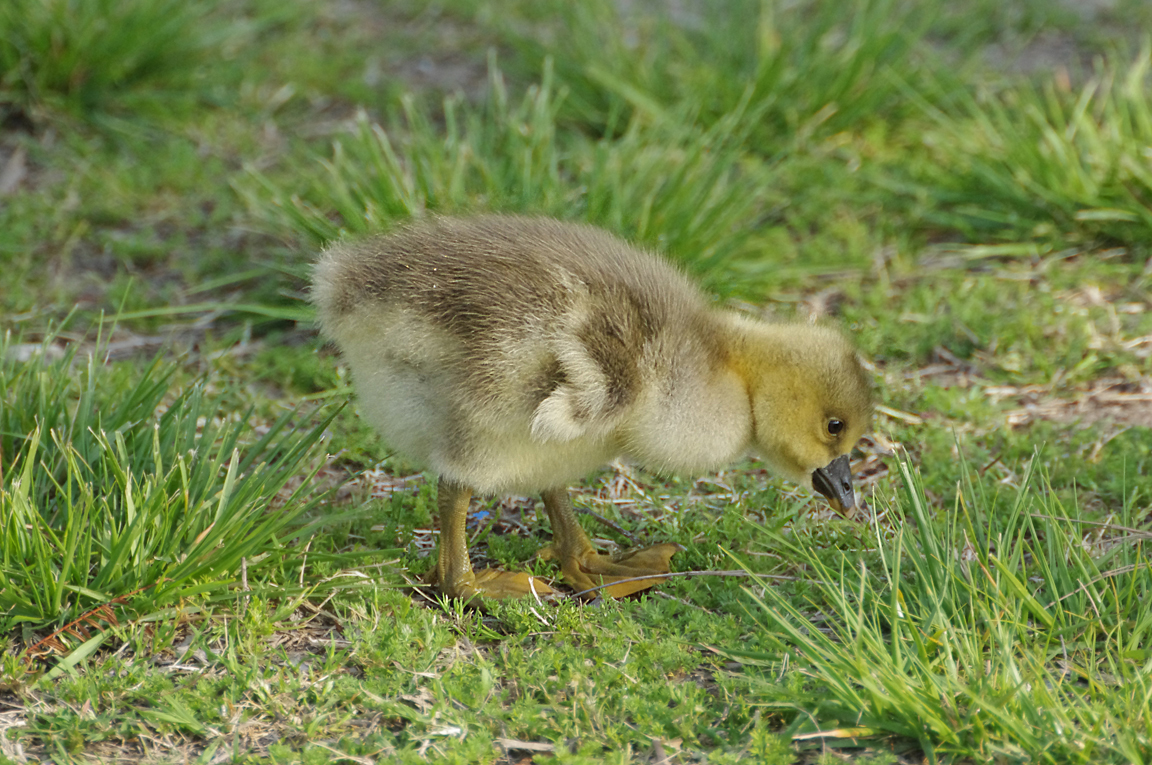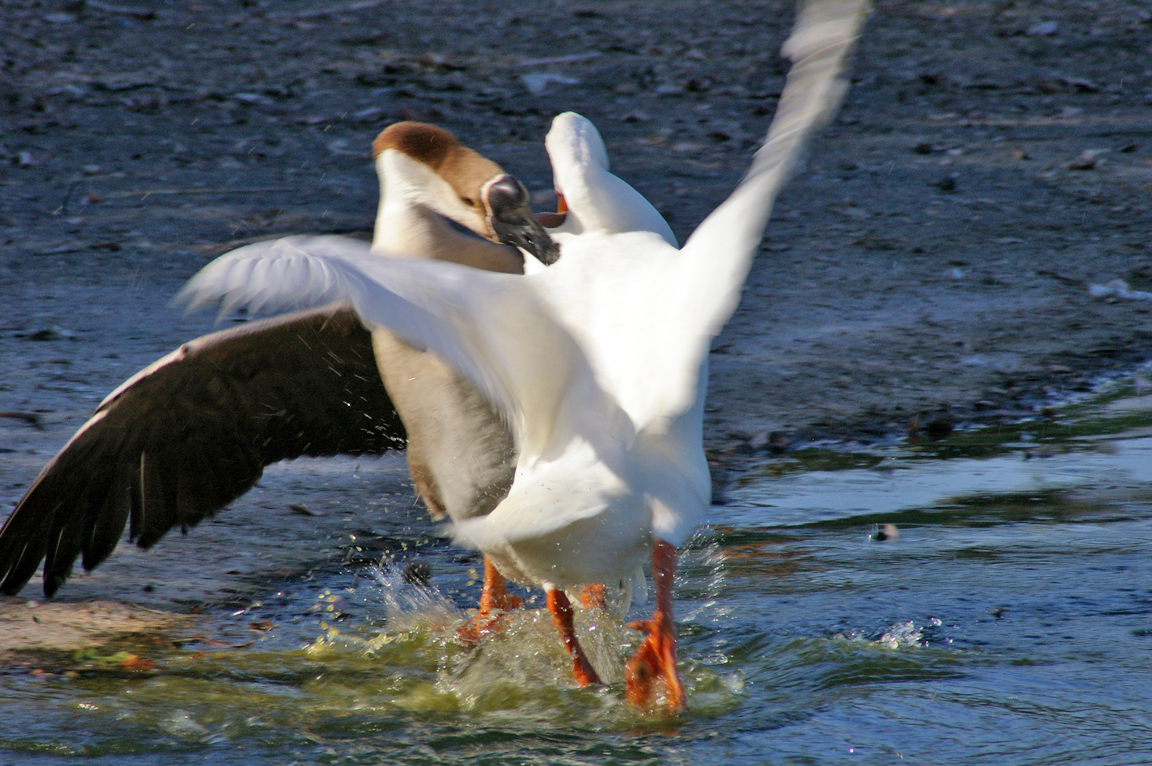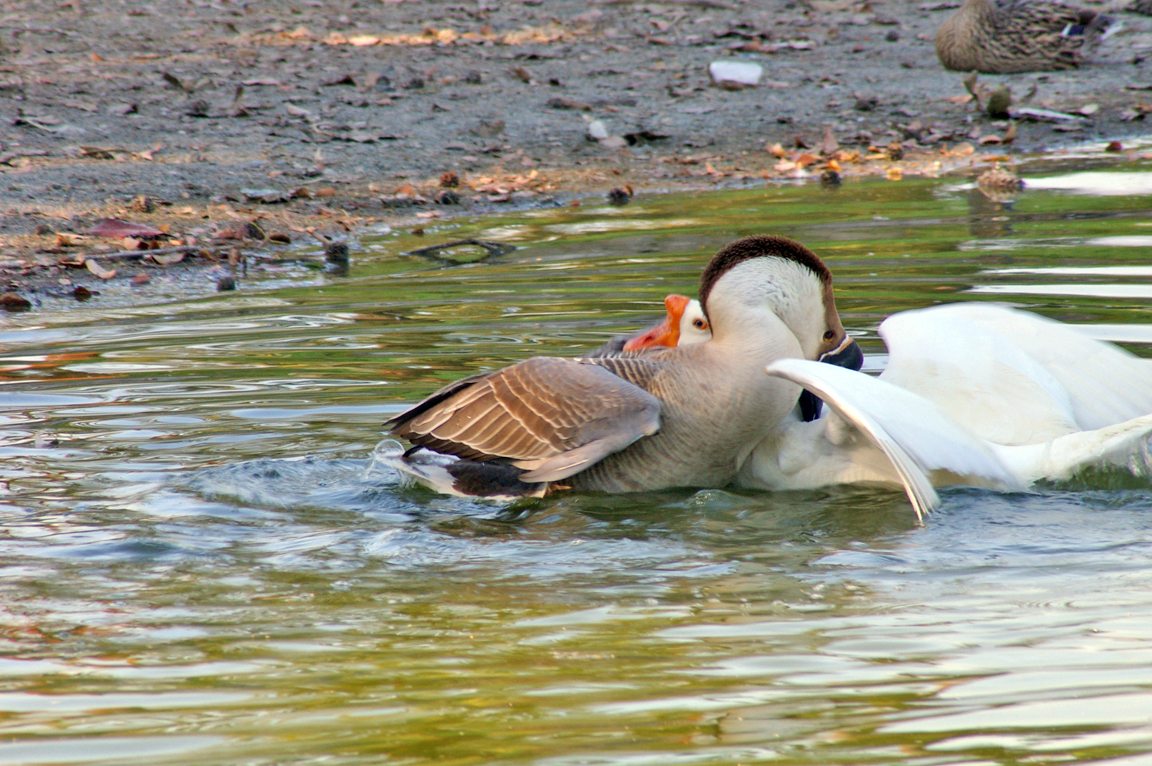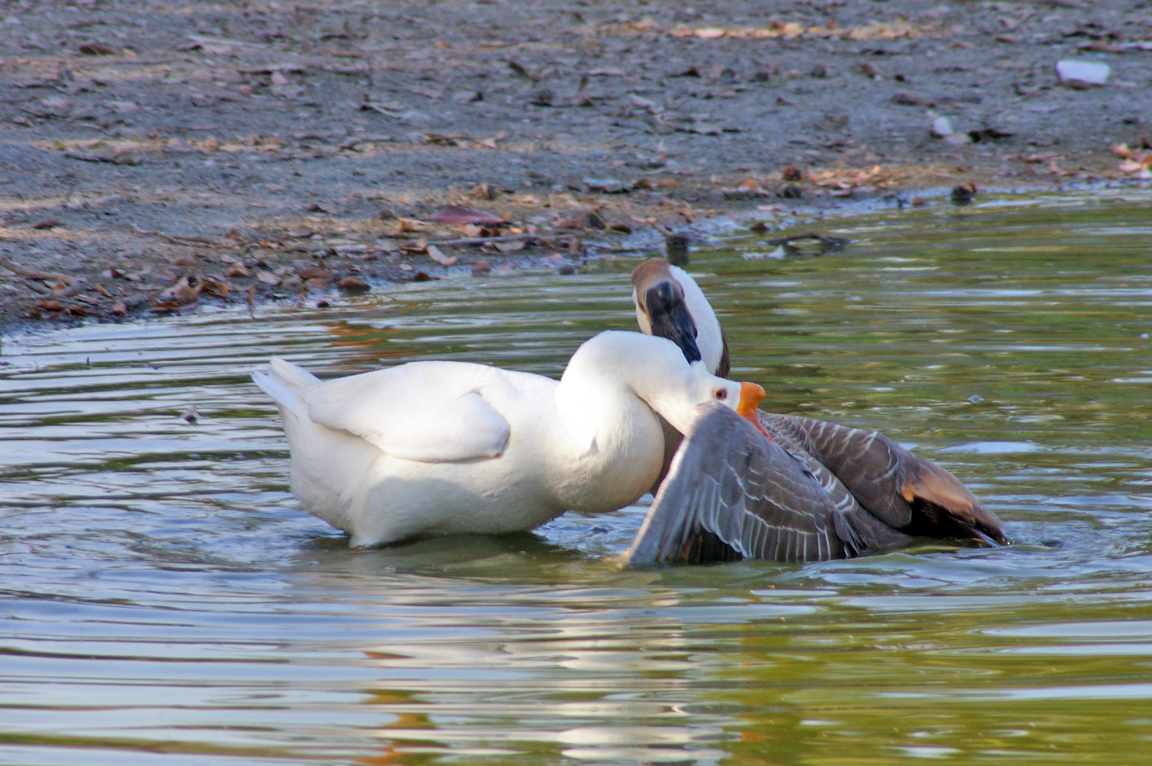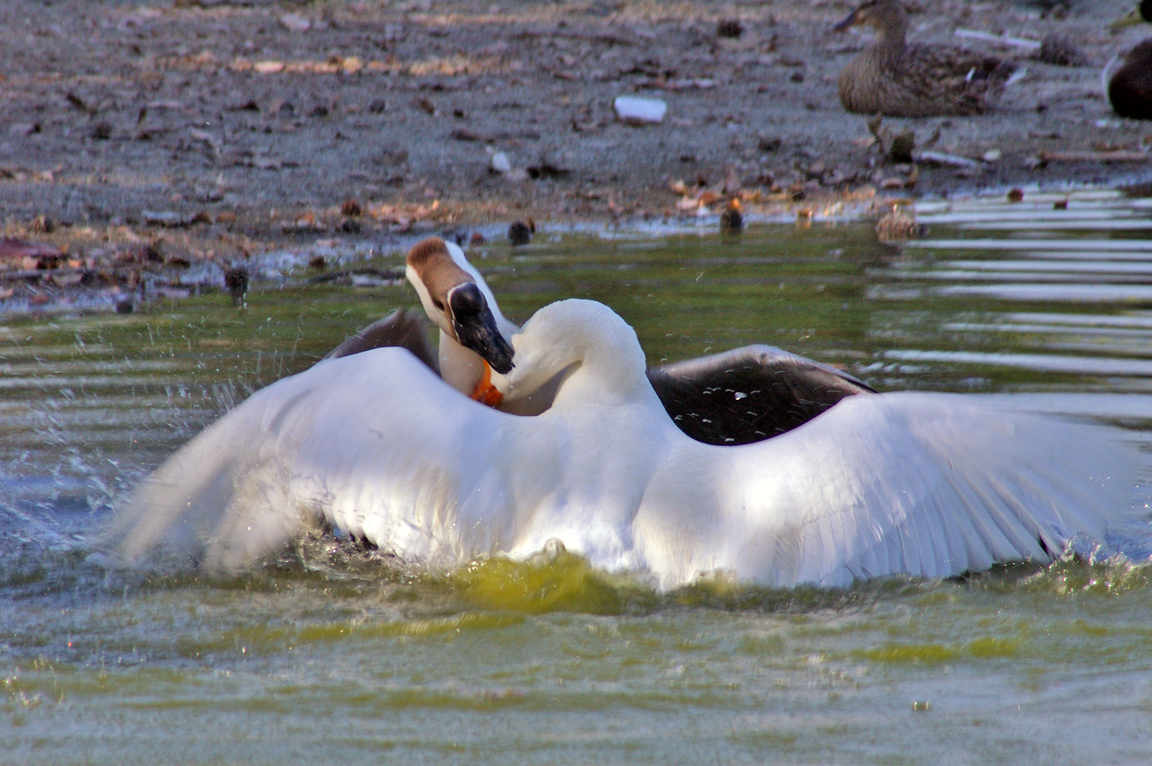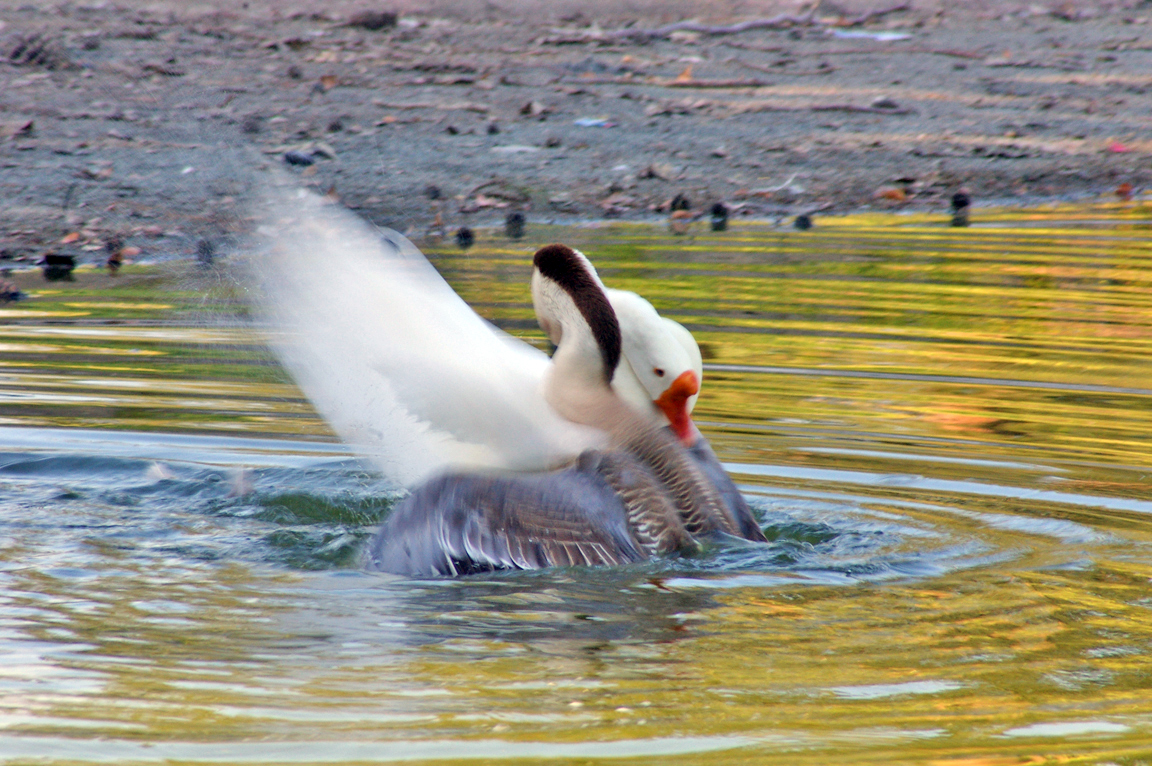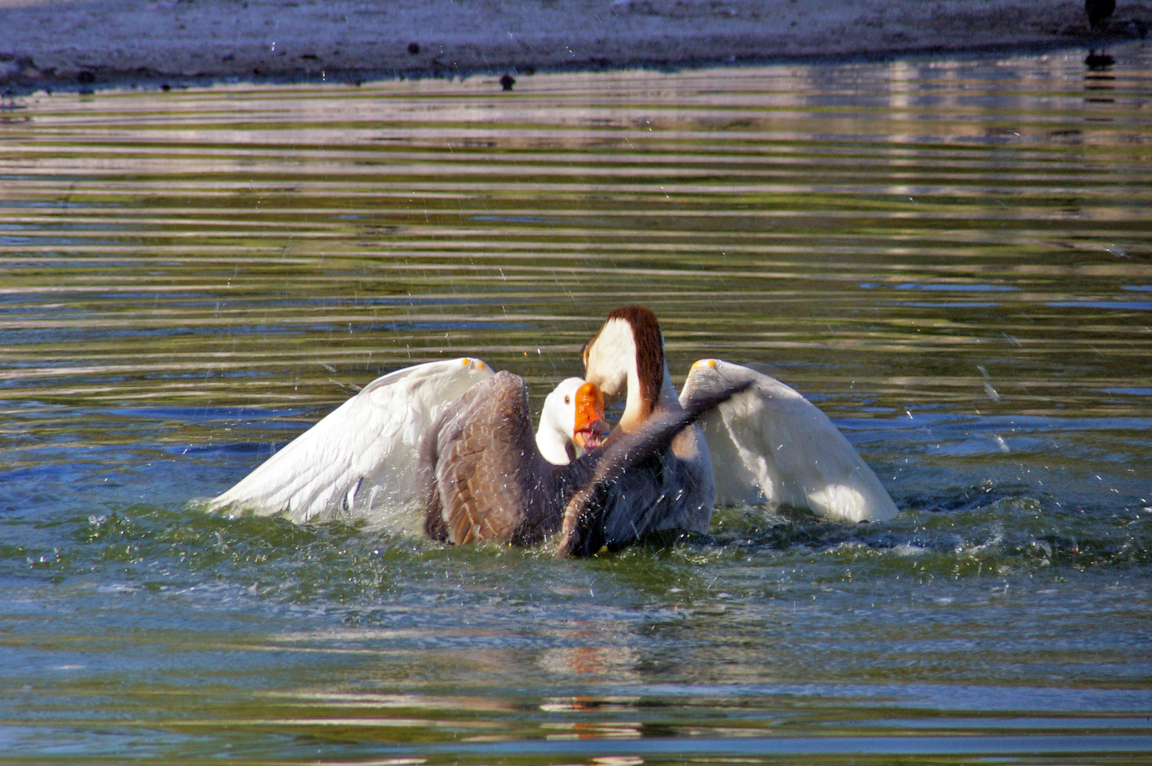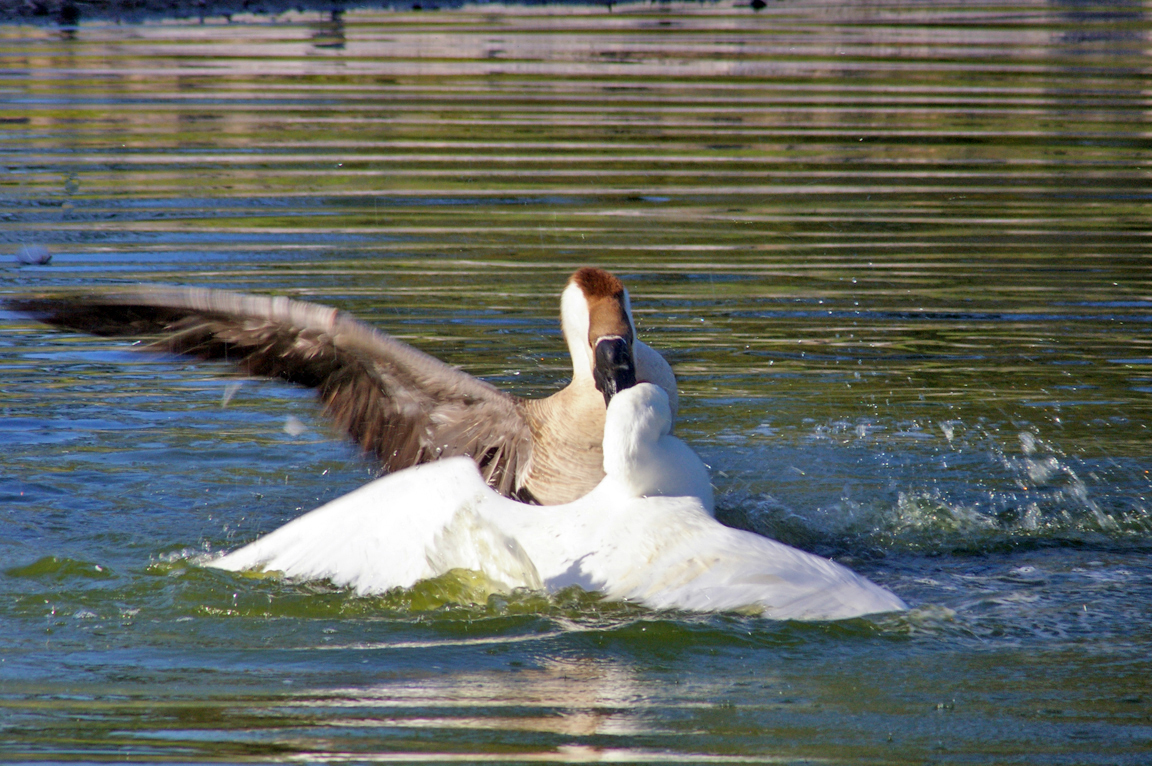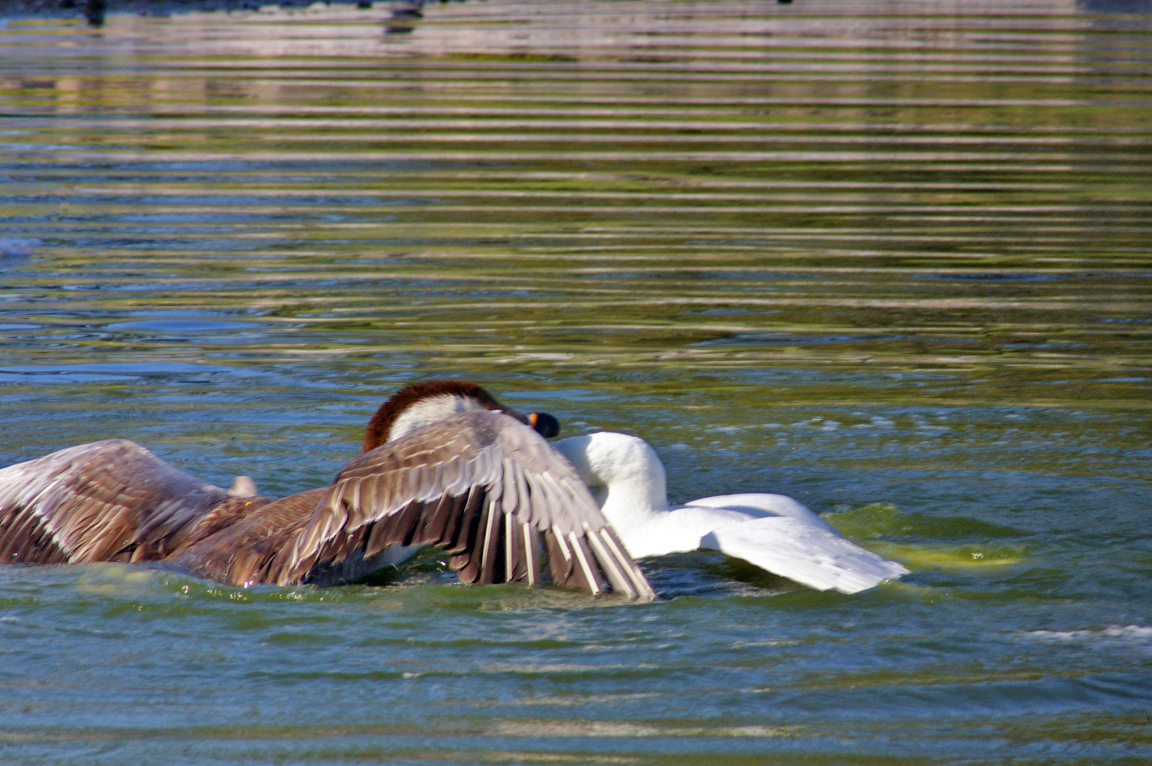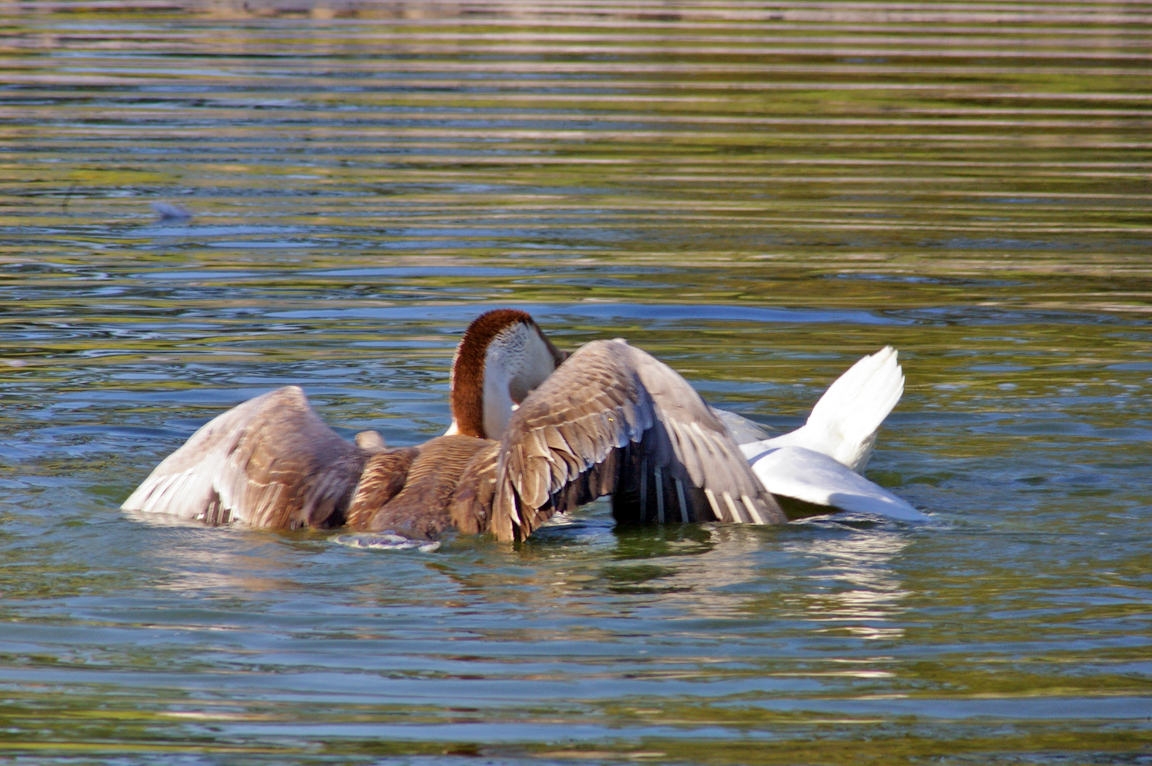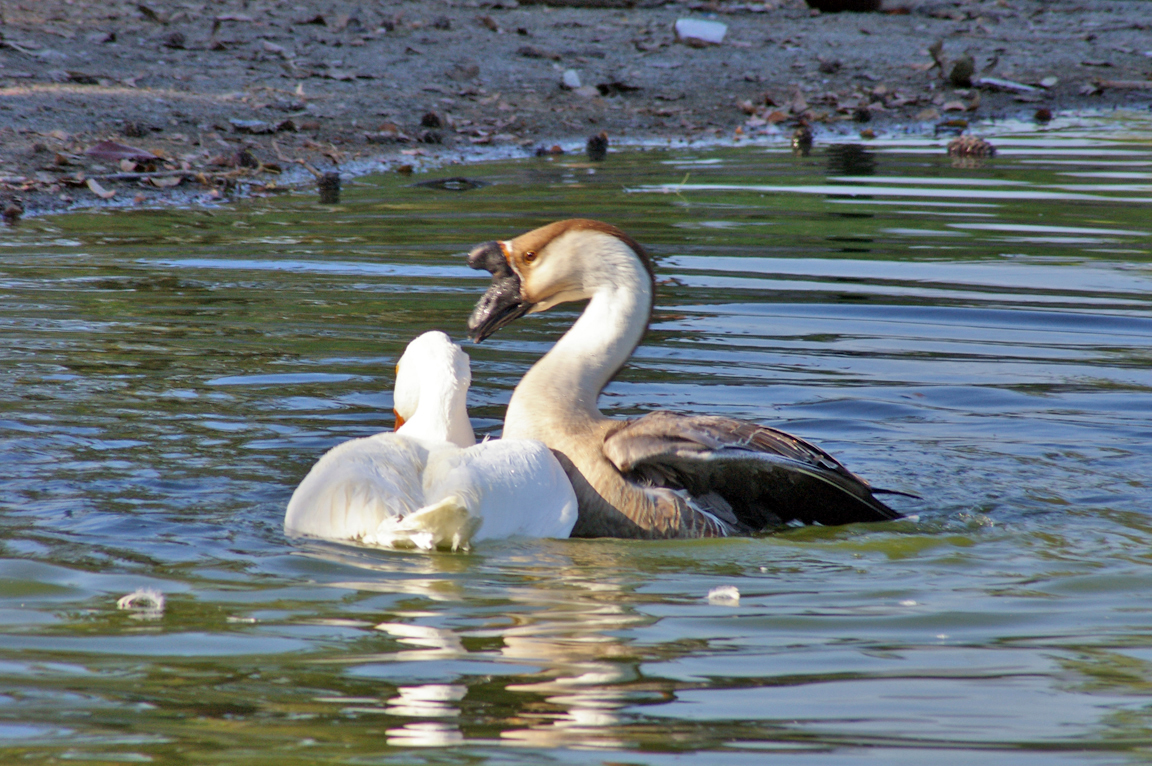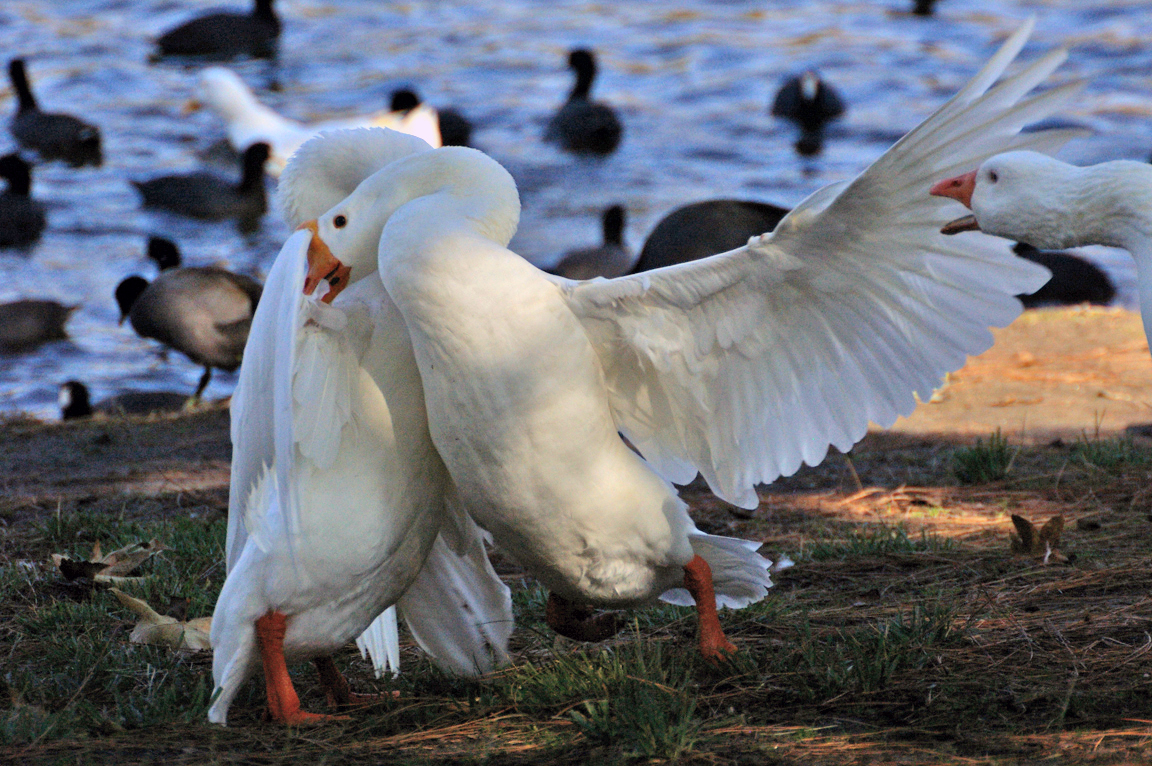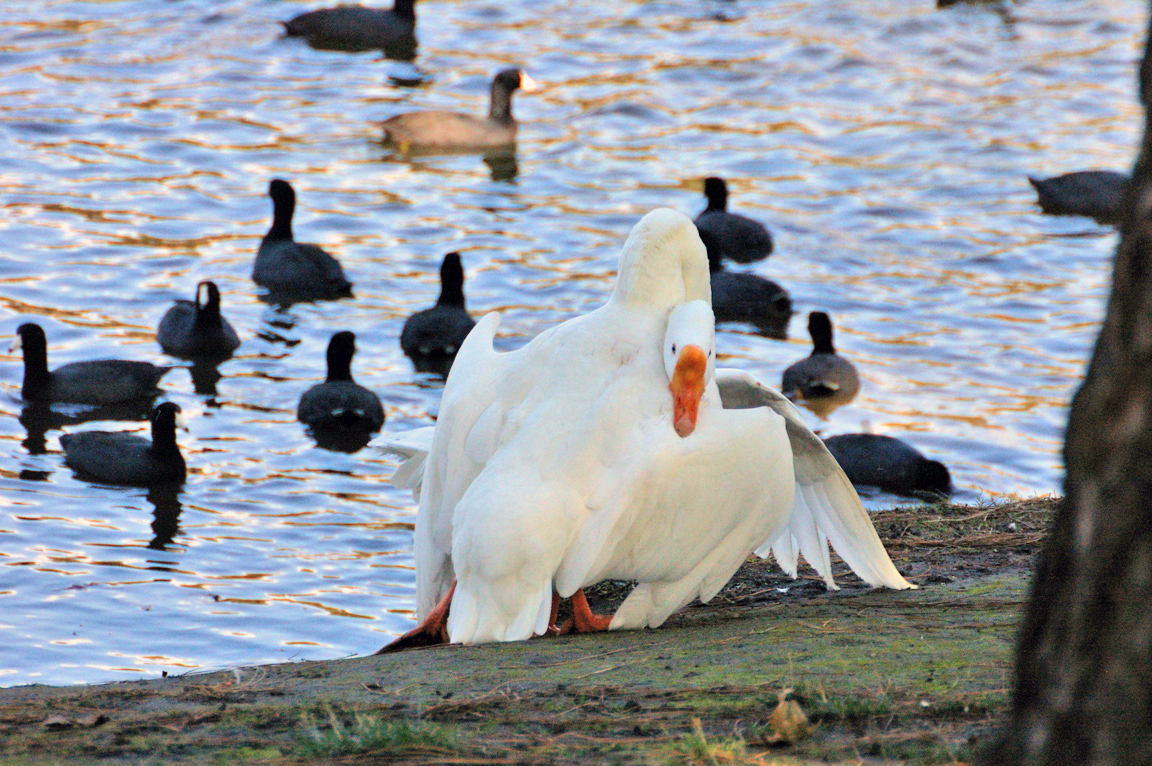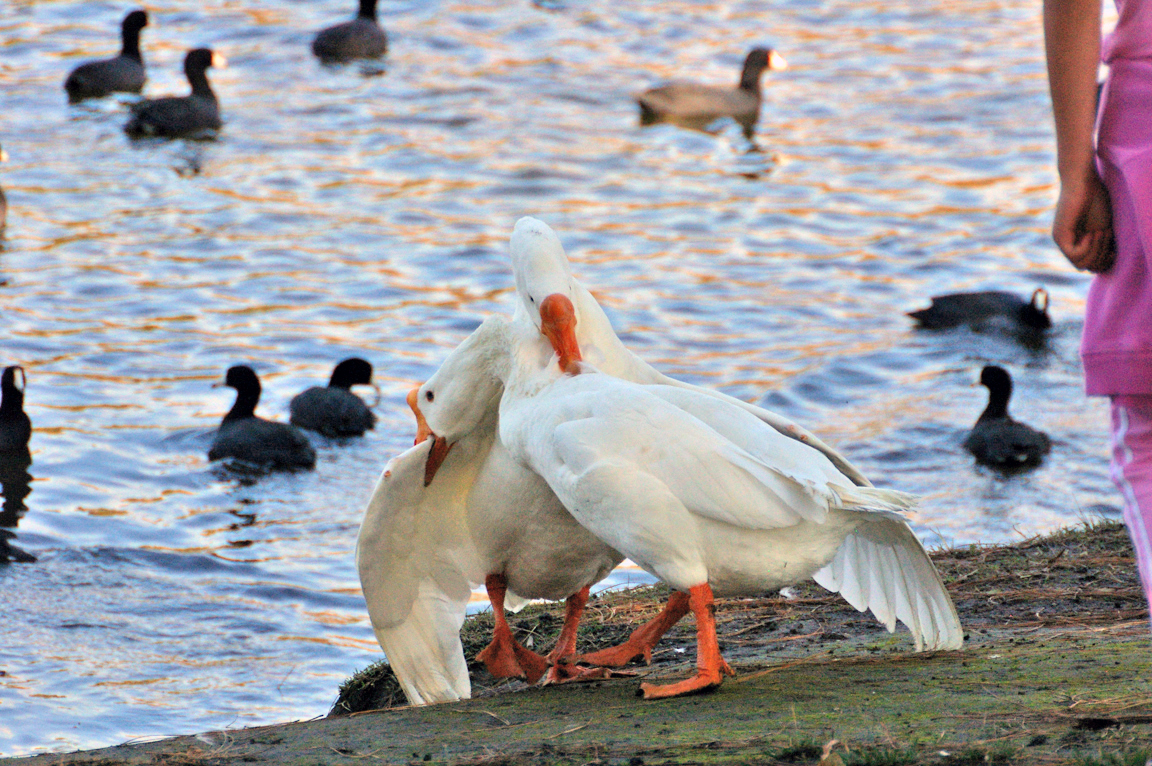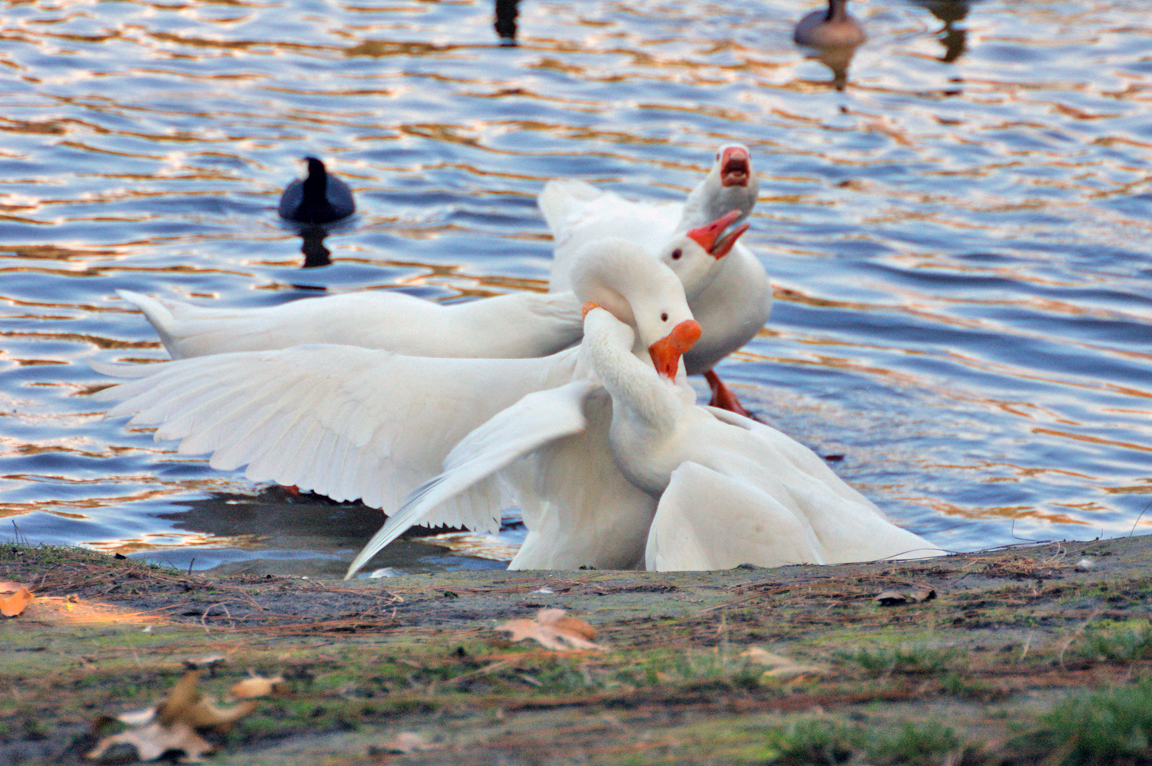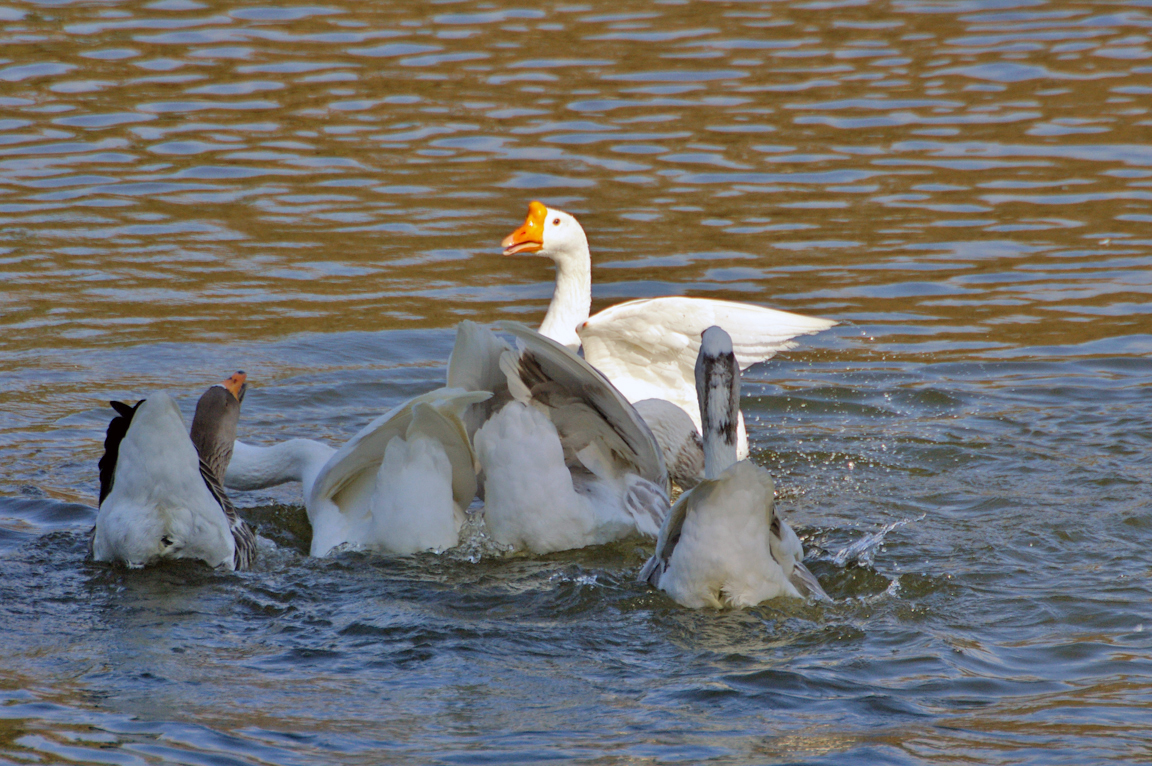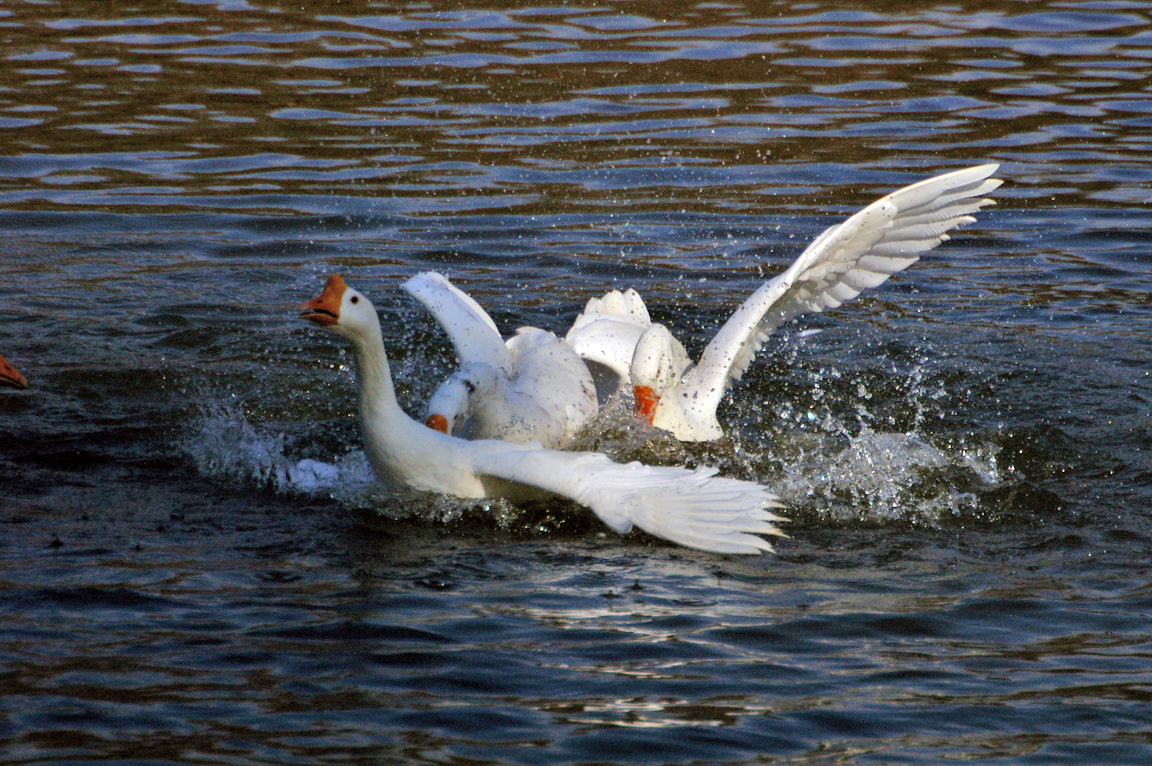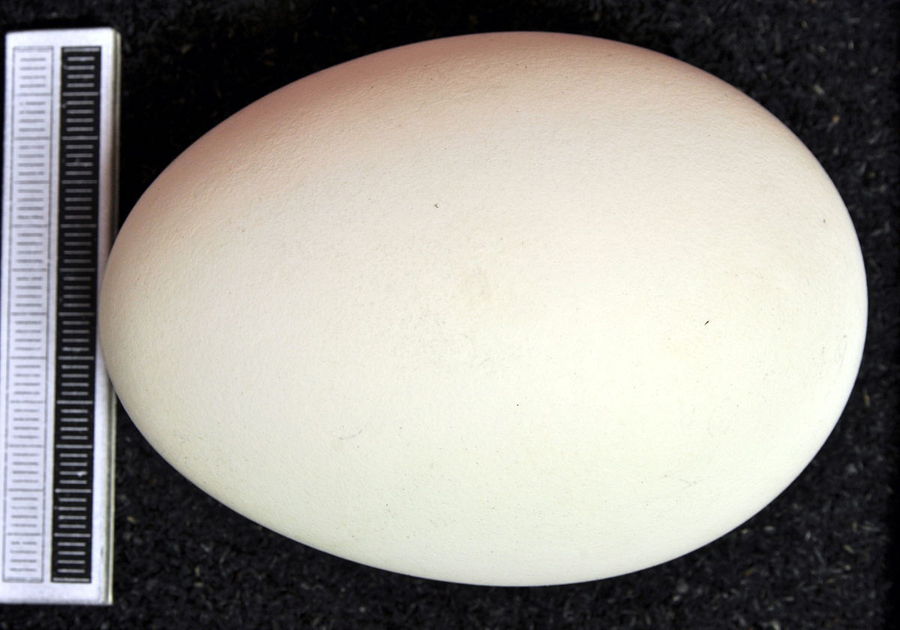|
|
|
 |
Chinese Goose (Swan Goose) Domesticated |
| Anser cygnoides | |
Chinese geese are considered by many to be the most graceful and beautiful member of the goose family. They are elegant and dignified on both land and water. Sometimes referred to as "Swan Geese" because of their long and graceful necks, they, in fact, descend from the wild swan goose native to Asia (Holderread, 1986).
Interesting Information
-
Domesticated in Central Siberia over 2,000 years ago, the Chinese Goose is the smallest of all domestic geese.
-
They have also been considered good "watch-dogs";, as they can be quite aggressive and vocal when threatened.
Description
Adult Description
Chinese geese are exceptionally practical. Of all breeds, they are the best layers, most active foragers, produce the least greasy meat, and, except for Pilgrims, are the easiest to sex at maturity (Holderread, 1981). With good management, the average Chinese goose produces nearly twice as many goslings as other geese, laying 40 - 100 white eggs annually. Because they are alert and vocal, they will raise the alarm if a threat is perceived (Holderread, 1986). Geese eat many grasses and herbaceous plants. If properly managed they can be employed as "weeders." "Chinese geese are by far the most popular breed for weeding chores due to their active foraging habits, moderate size, unmatched agility, good availability and reasonable prices." (Holderread, 1986). Poultry catalogs will commonly refer to this breed as "Weeder Geese."
The Chinese goose is refined and curvaceous. Its bill is relatively long and slender, with a large, rounded, erect knob that attaches to its forehead. The Chinese holds its head high. Its head flows seamlessly into a long, slim, well-arched neck which meets the body at about a 45 degree angle. Its body is short, compact, has a prominent and well-rounded chest, smooth breast and no keel. Its abdomen is moderately full but has no fatty lobes, except during the laying season when the female may develop a single lobe. The tail should be held high, which is worth noting as this is a good indication of vitality in ganders. A Chinese goose is often heavier than it appears, as its feathers are closely fitted. Mature ganders average 12 pounds, mature geese average 10 pounds (Holderread, 1981).
When selecting breeding stock, "pick birds with compact bodies, prominent chests and keelless breasts, wings that fold in front of an erect tail, slender and symmetrically arched necks and large, rounded knobs that rise well above the crown of the head. A spry, upright carriage, is important in Chinese since it is a sign of good health and vigor. Avoid breeding from specimens with drooping shoulders, roach backs, deformed necks and long bodies." (Holderread, 1981). A ratio of four to six geese per gander, rather than allowing a one to one pairing, reduces competition in the flock (Holderread, 1981). The Chinese is a hardy breed, however their knobs which will freeze when temperatures fall below 20°F to 25°F (-5°C). It is important to provide the flock some protection during freezing weather (Holderread, 1986).
There are two color varieties of Chinese geese, brown and white. The original variety is a rich brown and fawn, accented by a dark, russet-brown neck stripe. In mature birds, the glossy black bill and knob are separated from the main head plumage by a narrow band of creamy-white feathers. The shanks and feet are brownish orange or dark orange and the eyes brown. The white variety has blue eyes, pure white plumage, and bright orange feet, knobs and bills. While goslings of white European breeds are mainly gray with yellow trim, the down of day-old White Chinese is a bright canary yellow (Holderread, 1981). Both varieties were admitted to the American Poultry Association's Standard of Perfection in 1874 (Malone, et. al., 1998).
Sex Differences
Sexes similar. Males have larger knob at base of bill
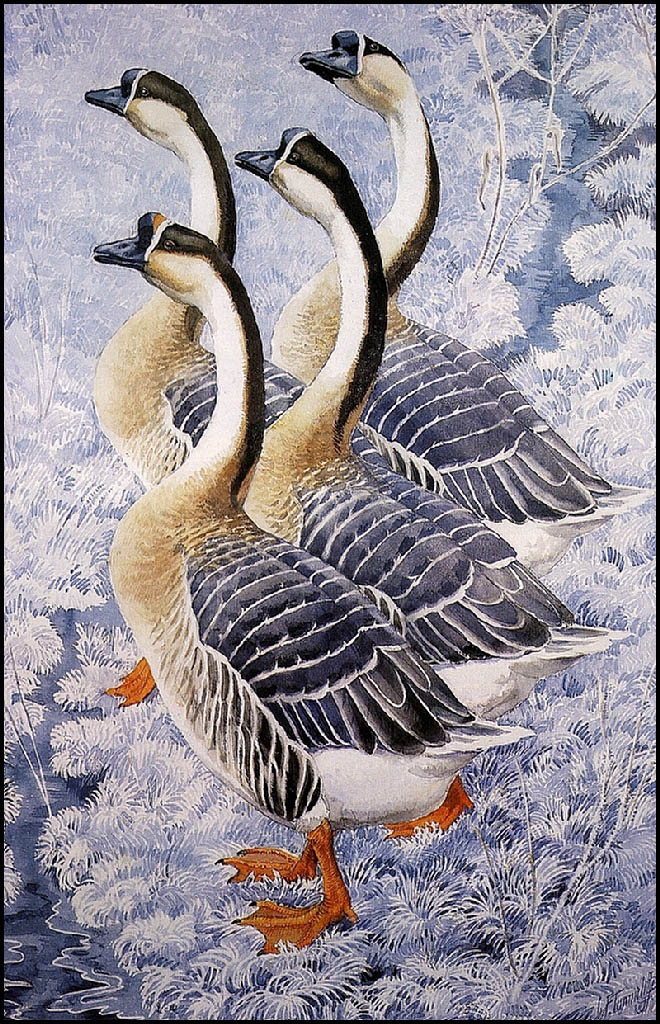
Photo taken from: Chinese Geese by Charles Tunnicliffe
|
Habitat |
|
It breeds in wetlands in the steppe and forest-steppe zones, including river deltas, river valleys with meadows, the margins of brackish and freshwater lakes, and in mountainous areas along narrow, fast-flowing rivers. In winter, it occurs in lowland lakeside marshes, rice-fields, estuaries and tidal flats. |
|
Behavior |
|
Breeding: A ratio of four to six geese per gander, rather than allowing a one to one pairing, reduces competition in the flock (Holderread, 1981). Chinese have been known to lay large quantities of eggs - over 100 in a year! |
|
Food |
|
The diet of the Chinese Goose includes green vegetation and grains. The Chinese Goose eats a variety of grasses when on land. It feeds by grasping a blade of grass with the bill, then tearing it with a jerk of the head. The Chinese Goose also eats grains such as wheat, beans, rice, and corn when they are available. In the water, it feeds from silt at the bottom of the body of water. It also feeds on aquatic plants, such as seaweeds. |
Taxonomy
| Kingdom: | Animalia |
| Phylum: | Chordata |
| Subphylum: | Vertebrata |
| Class: | Aves |
| Order: | Anseriformes |
| Family: | Anatidae |
| Subfamily: | Anserinae |
| Genus: | Anser |
| Species: | Anser cygnoides |
|
Bird Sound |
|
Loud honking noise. |
|
Eggs look like this |
|
Photo taken from: ARCTOS Collaborative Collection Management Solution |
Videos
Chinese Goose 1
Up close and personal
Chinese Goose 2
Male and Female
Chinese Goose 3
Light and Dark Variant
